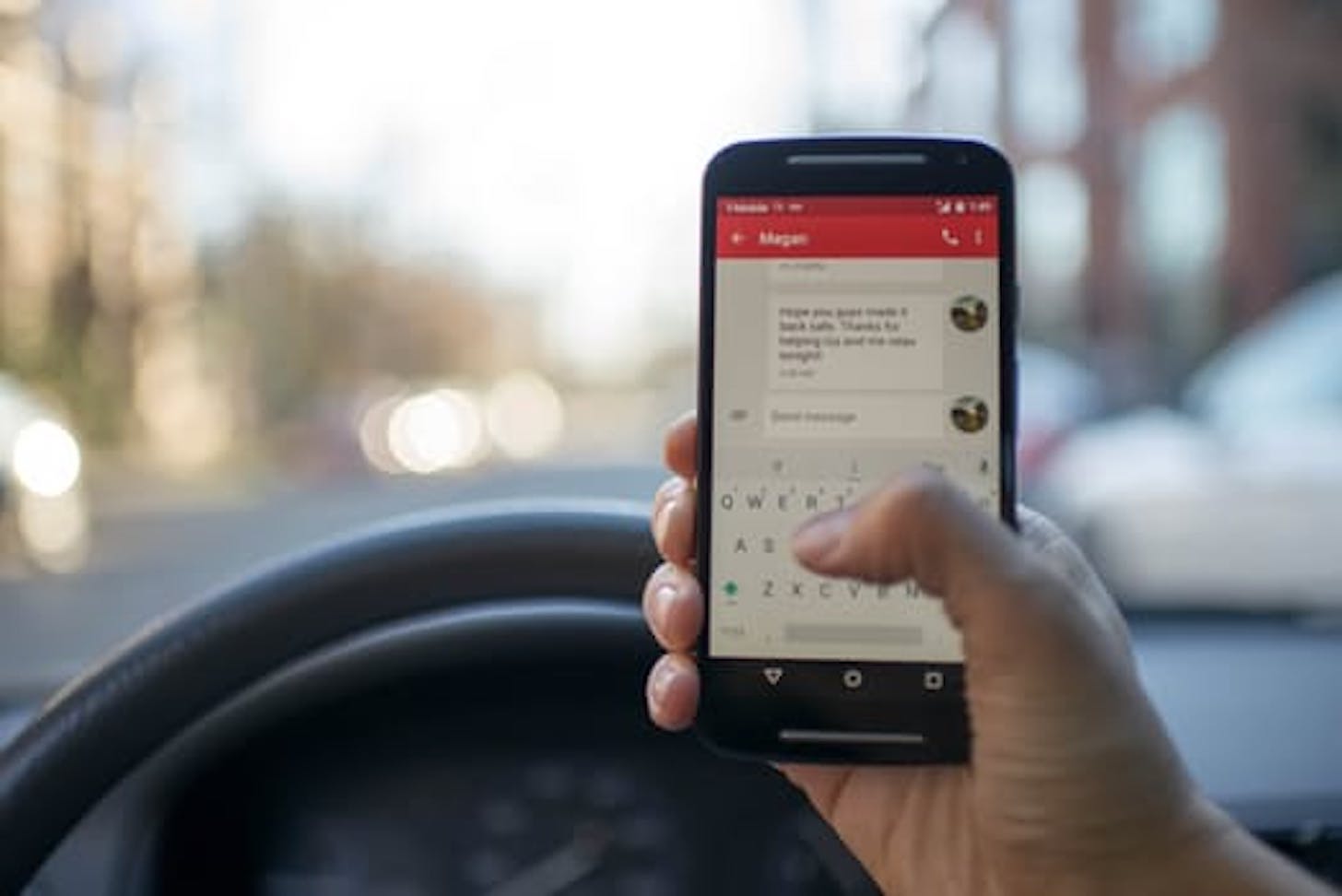by Cathi Bond
In a 2016 survey, 72% of teenagers reported feeling an urgency to check and immediately respond to text messages and social media notifications from their friends. They found it almost impossible to resist the impulse to check the pings or to post; experiencing FOMO (fear of missing out).
According to Quorum Insurance, “Many teens feel the need to check on or update their social media so frequently that they do it while out on the road. It is not difficult to find hundreds of ‘selfies’ on social media platforms that were snapped by teens while they were behind the wheel of a car. This behavior is dangerous and increases the likelihood of collisions.” Data from a 2012 survey reported some teenagers send about 200 text messages a day and 75% of teenagers admitted to texting while driving.
Alarmingly, 56% of parents admitted they too check notifications while driving! Adults feel pressure from unrealistic expectations to always be available to their bosses or managers regarding work responsibilities. They may become overconfident in their ability to drive while checking their phone, trying to accomplish multiple demands. Unfortunately, parents are not leading by example.
Texting while driving occurs across all age groups, but young adults make up the largest group of distracted drivers in fatal accidents. AAA auto group research reports, “Teens have the highest crash rate of any group in the United States…In the moments leading up to a crash, teens were more likely to be texting or looking down at the phone than talking on it… Many teens are texting or using social media behind the wheel more often than in the past, which is making an unsafe situation even worse.”
- 264 million vehicles and 228 million smartphones – make a deadly combination
- Over 40,000 people died on U.S. roads in 2016, 14% increase from 2014
- Texting while driving accounts for thousands of accidents each year
- Texting while driving – 25% of all car accidents
- Half of all teen crashes – distracted driving
- Distracted driving claims 8 lives every single day
Behind each statistic are devastating stories of families and lives shattered. Our family has been touched by tragedy stemming from a young driver who was texting while driving. He now understands all too well that no text message is worth risking a life. In this situation, not far from our home, our 24 year old friend and his fiancé died as a result of texting while driving.
We receive text messages and notifications on our cell phones all day long, which most of us feel compelled to check immediately. Dr. David Greenfield, professor of psychiatry at University of Connecticut’s medical school says, “Every time you go on to that smartphone and check something, there is an unpredictability about what you’re going to find, when you’re going to find it and how good it’s going to be for you.” The unpredictability and accompanying rewards provide pleasurable chemical responses of dopamine in our brains. Therefore, the next time our cell phone buzzes it seems almost irresistible to resist checking. This is operant behavioral conditioning with instant gratification, creating an addictive nature…like experiencing electronic cocaine.
Helpful suggestions:
- Talk with your children and teenagers frequently about the positive use of technology within boundaries.
- Set times of the day and rooms of your home to be tech free.
- Set and adhere to strict rules regarding phone use while driving.
- Control your notifications by reducing the number you receive to a manageable amount.
- Exercise to bring natural, pleasure releasing endorphins to your brain.
- Utilize apps that disable smart phones by physically turning them off at desired times or apps that temporarily block the ability to receive texts or calls in a moving vehicle.
- Utilize apps to view text messaging and monitor internet use.
- Limit teenager’s data or number of texts allowed so use is more intentional.

